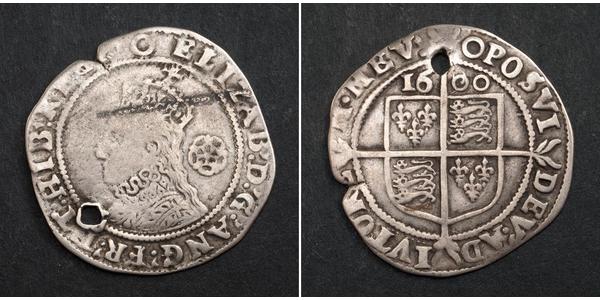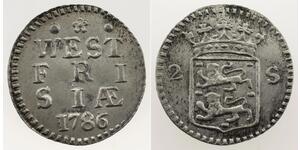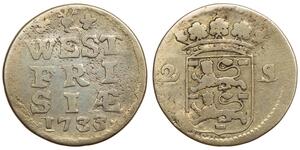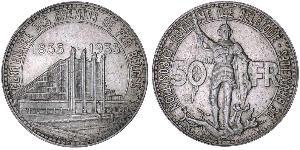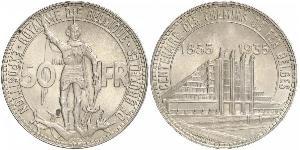(Verkauft für $210.0)
1600, Great Britain, Queen Elizabeth I. Scarce Hammered Silver Six Pence Coin.
Denomination: Six Pence Mint Period: 1600-1602 Mint Place: Tower (mint mark: O) Reference: N 2015, S. 2578A, KM-4 ($85 in F!) Condition: Pierced, small planchet split at 10 o'clock, light oxidation deposits from a nearby object in obverse, otherwise about VF/VF+ Diameter: 26mm Weight: 3.05gm Material: Silver
Obverse: Crowned bust of Elizabeth I of England left. Tudor rose to right. Legend: ELIZAB . D . G . ANG . FR . ET . HIB . REGI . O
Reverse: Royal shield over long cross. Date (16-00) split above shield. Legend: (privy mark: O) POSVI - DEV : AD - IVTORE - M . MEV ("I have made God my helper!")
The Tudor rose (sometimes called the Union rose) is the traditional floral heraldic emblem of England and takes its name and origins from the House of Tudor, which united the House of Lancaster and the House of York. The Tudor rose consists of five white inner petals, representing the House of York, and five red outer petals to represent the House of Lancaster.
Elizabeth I (7 September 1533 â€" 24 March 1603) was Queen of England and Queen of Ireland from 17 November 1558 until her death. Sometimes called The Virgin Queen, Gloriana, or Good Queen Bess, Elizabeth was the fifth and last monarch of the Tudor dynasty. The daughter of Henry VIII, she was born a princess, but her mother, Anne Boleyn, was executed three years after her birth, and Elizabeth was declared illegitimate. Her brother, Edward VI, cut her out of the succession. His will, however, was set aside, and in 1558 Elizabeth succeeded her half-sister, the Catholic Mary, during whose reign she had been imprisoned for nearly a year on suspicion of supporting Protestant rebels.
Elizabeth set out to rule by good counsel, and she depended heavily on a group of trusted advisers led by William Cecil, Baron Burghley. One of her first moves as queen was to support the establishment of an English Protestant church, of which she became the Supreme Governor. This Elizabethan Religious Settlement held firm throughout her reign and later evolved into today's Church of England. It was expected that Elizabeth would marry, but despite several petitions from parliament, she never did. The reasons for this choice are unknown, and they have been much debated. As she grew older, Elizabeth became famous for her virginity, and a cult grew up around her which was celebrated in the portraits, pageants and literature of the day.
In government, Elizabeth was more moderate than her father and siblings. One of her mottoes was video et taceo: "I see, and say nothing". This strategy, viewed with impatience by her counsellors, often saved her from political and marital misalliances. Though Elizabeth was cautious in foreign affairs and only half-heartedly supported a number of ineffective, poorly resourced military campaigns in the Netherlands, France and Ireland, the defeat of the Spanish armada in 1588 associated her name forever with what is popularly viewed as one of the greatest victories in English history. Within 20 years of her death, she was being celebrated as the ruler of a golden age, an image that retains its hold on the English people. Elizabeth's reign is known as the Elizabethan era, famous above all for the flourishing of English drama, led by playwrights such as William Shakespeare and Christopher Marlowe, and for the seafaring prowess of English adventurers such as Francis Drake and John Hawkins.
Historians, however, tend to be more cautious in their assessment. They often depict Elizabeth as a short-tempered, sometimes indecisive ruler, who enjoyed more than her share of luck. Towards the end of her reign, a series of economic and military problems weakened her popularity to the point where many of her subjects were relieved at her death. Elizabeth is, however, acknowledged as a charismatic performer and a dogged survivor, in an age when government was ramshackle and limited and when monarchs in neighbouring countries faced internal problems that jeopardised their thrones. Such was the case with Elizabeth's rival, Mary, Queen of Scots, whom she imprisoned in 1568 and eventually had executed in 1587. After the short reigns of Elizabeth's brother and sister, her 44 years on the throne provided valuable stability for the kingdom and helped forge a sense of national identity.

|
Beigetragen von:
anonymous 2020-12-16 |

1 Shilling Königreich England (927-1649, ...
Diese Gruppe hat 44 Münzen / 40 Preise
Add coin to this group

1 Pfundner Österreich Silber Ferdinand I ...
Diese Gruppe hat 7 Münzen / 7 Preise
Add coin to this group
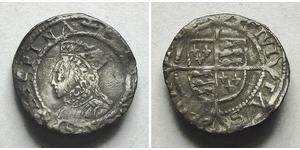
1 Penny Königreich England (927-1649,166 ...
Diese Gruppe hat 6 Münzen / 4 Preise
Add coin to this group

1 Gold Shield Heiliges Römisches Reich ( ...
Diese Gruppe hat 2 Münzen / 1 Preise
Add coin to this group
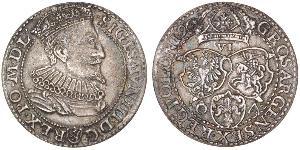
6 Grosh Polen-Litauen (1569-1795) Silber ...
Diese Gruppe hat 7 Münzen / 5 Preise
Add coin to this group

2/3 Thaler Deutschland Silber Ferdinand ...
Diese Gruppe hat 7 Münzen / 7 Preise
Add coin to this group
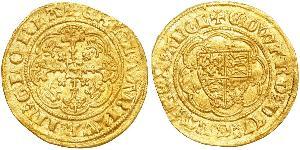
1/4 Noble Königreich England (927-1649,1 ...
Diese Gruppe hat 7 Münzen / 6 Preise
Add coin to this group
2 Stuiver Niederlande Silber
Diese Gruppe hat 33 Münzen / 33 Preise
⇑
50 Franc Belgien Silber
Diese Gruppe hat 34 Münzen / 33 Preise
⇑

